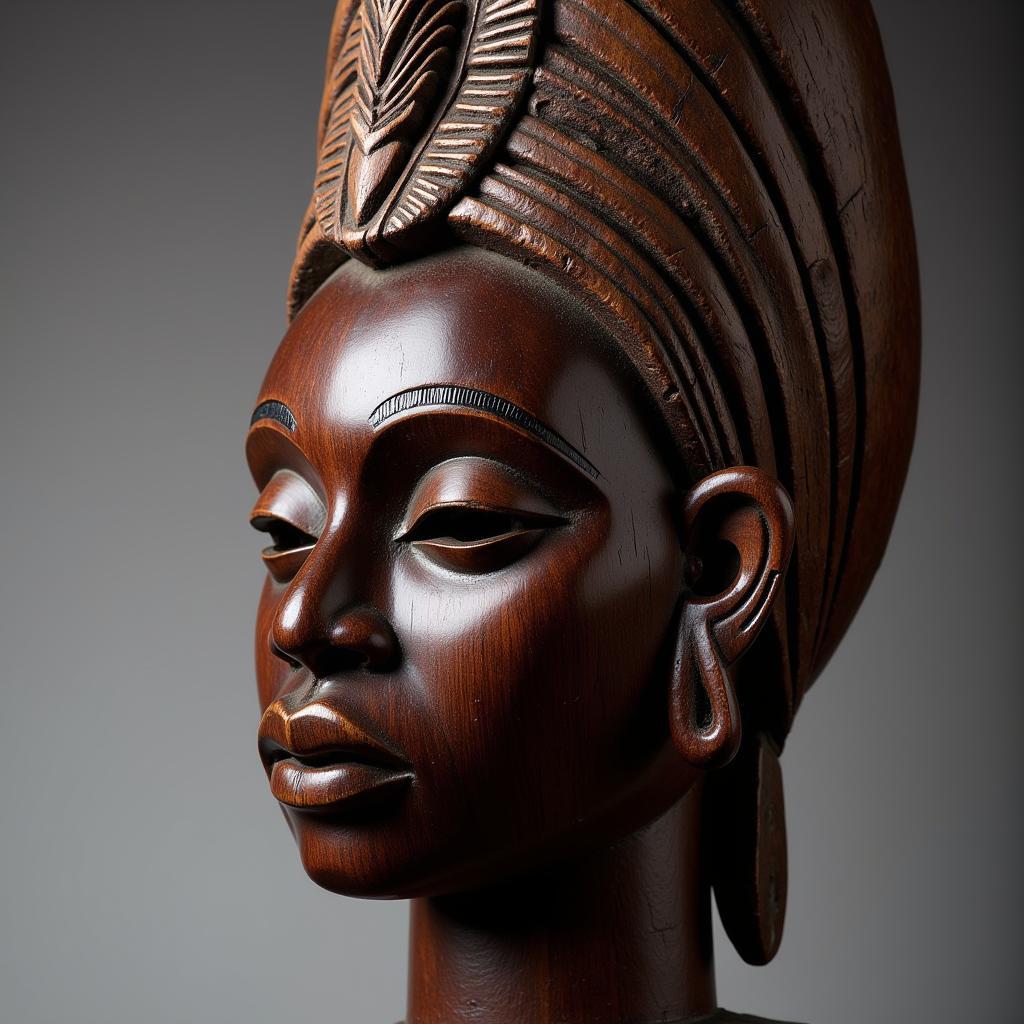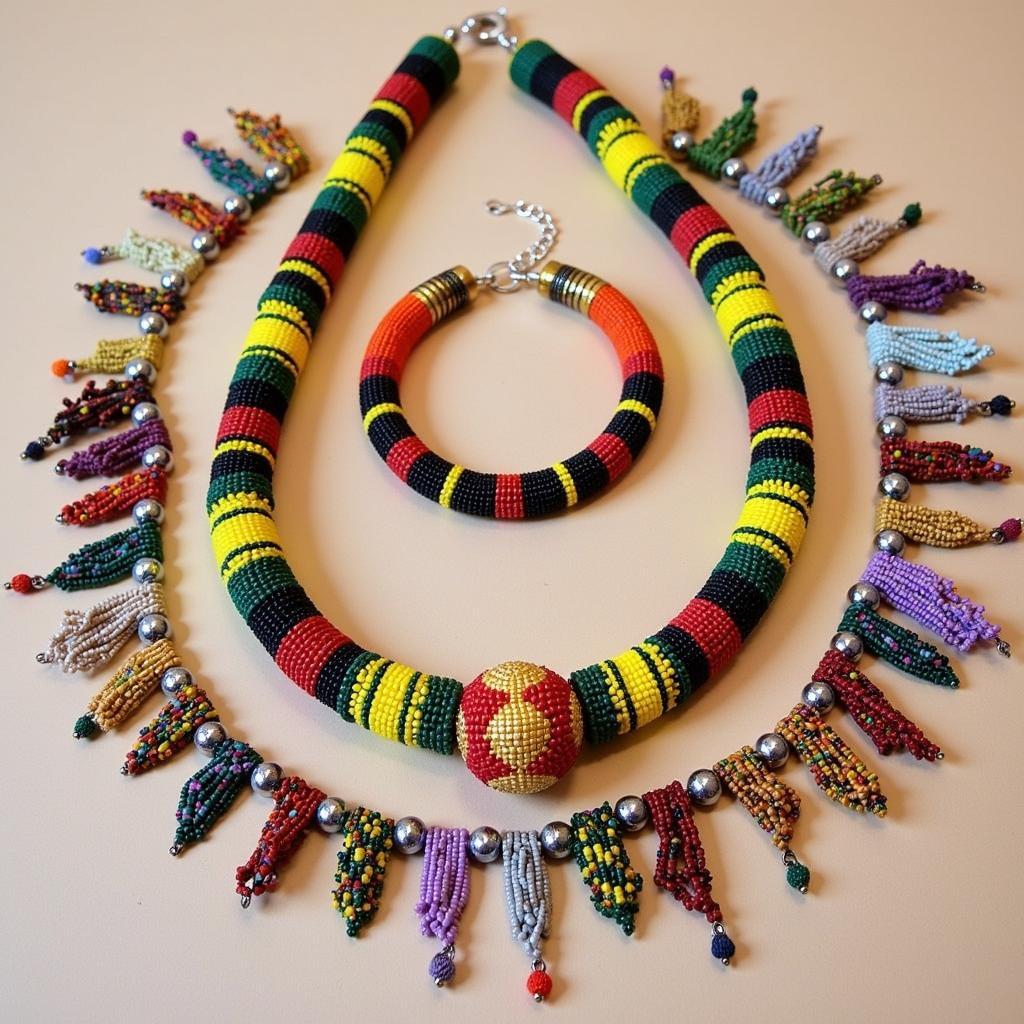Exploring the Vibrant World of African Crafts
African Crafts represent a captivating blend of cultural heritage, artistic expression, and resourceful innovation. From intricate beadwork to boldly patterned textiles and skillfully carved wooden sculptures, these handcrafted treasures offer a glimpse into the diverse traditions and artistic ingenuity found across the African continent. This article delves into the fascinating world of African crafts, exploring their rich history, diverse forms, and the cultural significance they hold. We will also examine the contemporary landscape of African crafts and their increasing global presence. Soon after this introduction, you can learn more about where to purchase African crafts in the UK from our african crafts uk link.
A Journey Through Time: The History of African Crafts
African crafts have a long and storied history, deeply intertwined with the continent’s rich cultural tapestry. For centuries, these crafts have served not only as functional objects but also as powerful symbols of cultural identity, spiritual beliefs, and social status. Ancient Egyptian crafts, for example, showcase remarkable skill in metalworking, jewelry making, and pottery, reflecting the sophisticated artistry of the time. Across West Africa, traditional weaving techniques have been passed down through generations, resulting in vibrant textiles that tell stories and embody cultural values.
The Diversity of African Crafts: A Continent of Creativity
The vastness of Africa is reflected in the incredible diversity of its crafts. Each region boasts its own unique artistic traditions and specialties. From the intricate beadwork of the Maasai people in East Africa to the elaborate wood carvings of the Yoruba people in West Africa, every craft tells a story. North African crafts are known for their intricate geometric patterns and vibrant colors, often found in carpets, ceramics, and leather goods. Southern Africa is renowned for its basketry, pottery, and intricate beadwork, each piece reflecting the specific cultural heritage of its creator. You can find beautiful examples of African flower crochet patterns by following this link: african flower hexagon crochet pattern.
 Intricately carved African mask made of wood, showcasing traditional artistry.
Intricately carved African mask made of wood, showcasing traditional artistry.
Materials and Techniques: A Symphony of Skill and Resourcefulness
African crafts often utilize readily available natural materials, showcasing the resourcefulness and ingenuity of African artisans. Wood, clay, fibers, beads, and even recycled materials are transformed into objects of beauty and functionality. Traditional techniques, passed down through generations, are employed to create these masterpieces. Weaving, carving, pottery, and beadwork are just a few examples of the intricate skills employed in the creation of African crafts. What materials are commonly used in African crafts? Primarily, natural resources such as wood, clay, and various fibers.
The Cultural Significance of African Crafts: More Than Just Objects
African crafts are much more than mere decorative objects. They play a vital role in various cultural ceremonies, rituals, and everyday life. Masks, for example, are often used in traditional dances and ceremonies, representing spirits and ancestors. Textiles, with their vibrant patterns and symbolic meanings, are worn for special occasions and signify social status. Pottery and baskets serve practical purposes while also embodying artistic expression. Explore various African crafts projects suitable for elementary school students by clicking here: african crafts for elementary.
Aisha Ndidi, a renowned Kenyan art historian, states, “African crafts embody the spirit of a community. They are tangible expressions of cultural identity, passed down through generations, connecting the past with the present.”
African Crafts in the Modern World: A Global Stage
Today, African crafts are gaining increasing recognition on the global stage. From fashion runways to art galleries and online marketplaces, these handcrafted treasures are finding their way into homes and collections worldwide. This growing appreciation for African artistry not only provides economic opportunities for artisans but also helps to preserve and celebrate the rich cultural heritage of the continent. Where can I find African crafts wholesale? For those interested in purchasing wholesale, explore our dedicated page: african crafts wholesale.
 Colorful African beaded jewelry, including a necklace and bracelet.
Colorful African beaded jewelry, including a necklace and bracelet.
Conclusion: A Celebration of Artistry and Heritage
African crafts are a testament to the continent’s rich artistic heritage and cultural diversity. From the intricate beadwork of the Maasai to the bold textiles of West Africa, these handcrafted treasures offer a glimpse into the vibrant traditions and artistic ingenuity found across Africa. By appreciating and supporting African crafts, we contribute to the preservation of these invaluable cultural expressions for generations to come.
FAQ
- What are some popular types of African crafts?
Popular African crafts include masks, textiles, pottery, basketry, beadwork, and wood carvings. - Where can I buy authentic African crafts?
Authentic African crafts can be purchased directly from artisans, fair trade organizations, and reputable online retailers. - How can I tell if an African craft is authentic?
Look for handcrafted details, natural materials, and inquire about the origin and artisan behind the piece. - What is the significance of masks in African culture?
Masks often represent spirits, ancestors, and are used in traditional ceremonies and performances. - How are African crafts being used in contemporary design?
African crafts are increasingly incorporated into modern fashion, interior design, and art, showcasing their timeless appeal. - What are some resources for learning more about African crafts?
Museums, cultural centers, books, and online resources offer valuable information about African crafts. - How can I support African artisans?
By purchasing their work directly or through fair trade organizations, you contribute to their livelihoods and the preservation of their craft.
Need help with African crafts? Contact us at +255768904061, [email protected], or visit us in Mbarali DC Mawindi, Kangaga, Tanzania. We’re here 24/7 to assist you.
